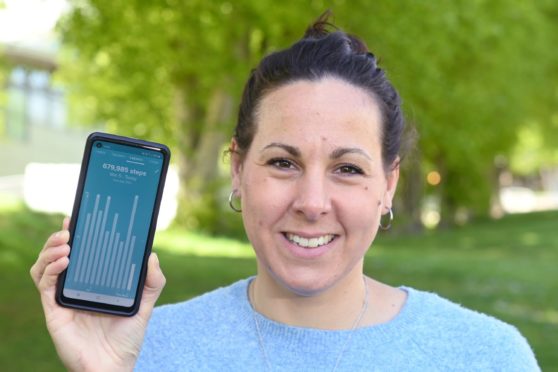Ten thousand steps a day has been hailed as the magic number for walking to get you fit.
But while reaching this target does give health benefits, it’s not likely to help us lose weight – because we’re not walking fast enough.
Laura Stewart, a course leader in applied sport and exercise science, says halving this target could help us shed the pounds instead.
And she’s given advice on how you can also step up other activities to help improve your overall fitness.
Why do we only need to do 5000 steps a day?
Laura said the 10,000 step trend works great for people aiming to set a target for a daily walk.
“It definitely has a role to play, it just depends on what your actual target is, whether it’s for movement or health,” she said.
“It gives people a very clear goal and with the increased use of fitness technology – Fitbits, Apple watches, pedometers on phones, it’s allowed people to have some control and track it.
“But in terms of weight loss, it is a little bit of a mixed bag because often 10,000 steps are done at too low an intensity to actually bring about additional health benefits.
“Often when people aim for the 10,000 steps they will do a lower intensity in order to meet the 10,000 steps.
“Whereas if they set a lower threshold they’ll probably do it at a higher intensity.
“Ideally, what you are looking for is moderate to vigorous intensity in terms of improving health, reducing body fat and improving body composition.”
Calculate your heart rate to work out the best intensity for your 5000 steps a day
Calculating your heart rate will help you work out if you’re walking at a high enough intensity to get into the fat-burning zone – and this is easy to do.

One of the simplest ways is to subtract your age from 220 to calculate your maximum heart rate.
Or a heart rate monitor with an activity tracker can also be used.
Laura, who works at Robert Gordon University in Aberdeen, says you ideally need to be working out at 50-70% of your maximum heart rate to lose weight.
She added: “Roughly if you’re doing moderate to vigorous intensity you could cover 100 steps a minute so in 10 minutes you do about 1,000 steps.
For the best results you need to do resistance training too
“If people want to address their aerobic fitness through walking either by doing the 10,000 steps or less at a higher intensity, the next thing for them to think about is their strength and resistance training.
“That doesn’t have to be in a gym, it doesn’t have to be lifting weights. It can be using body weights, it can be done at home or in a class.
“People tend to forget that resistance training is part of the weekly recommendations as well. Resistance training is key for health for both men and women.
“For example, a combination of aerobic and resistance training in people with diabetes has shown to better stabilise blood glucose than just doing aerobic or resistance training alone.
“You should be aiming to do resistance training twice a week – this includes older adults as well to help reduce the risk of falls.”


